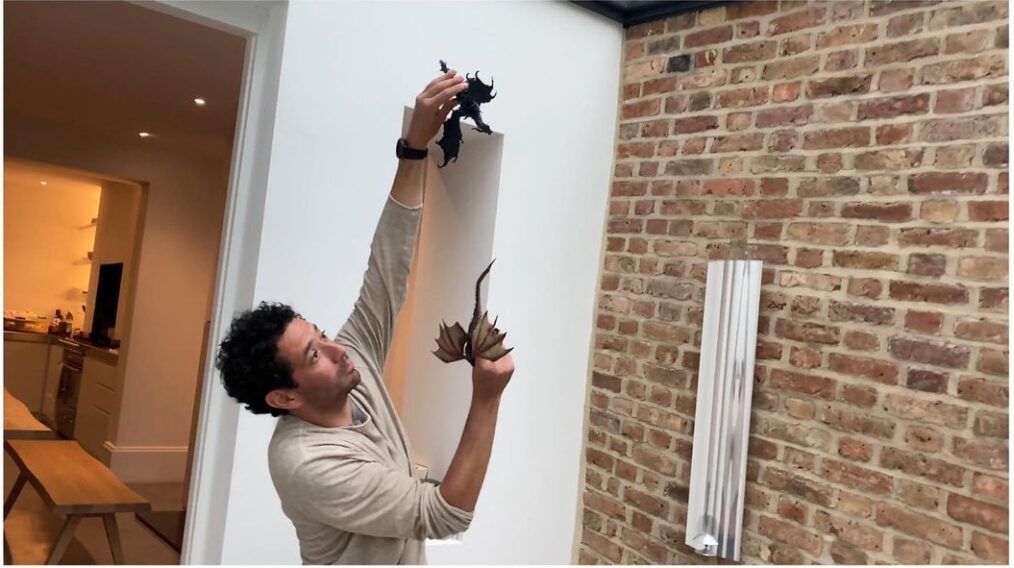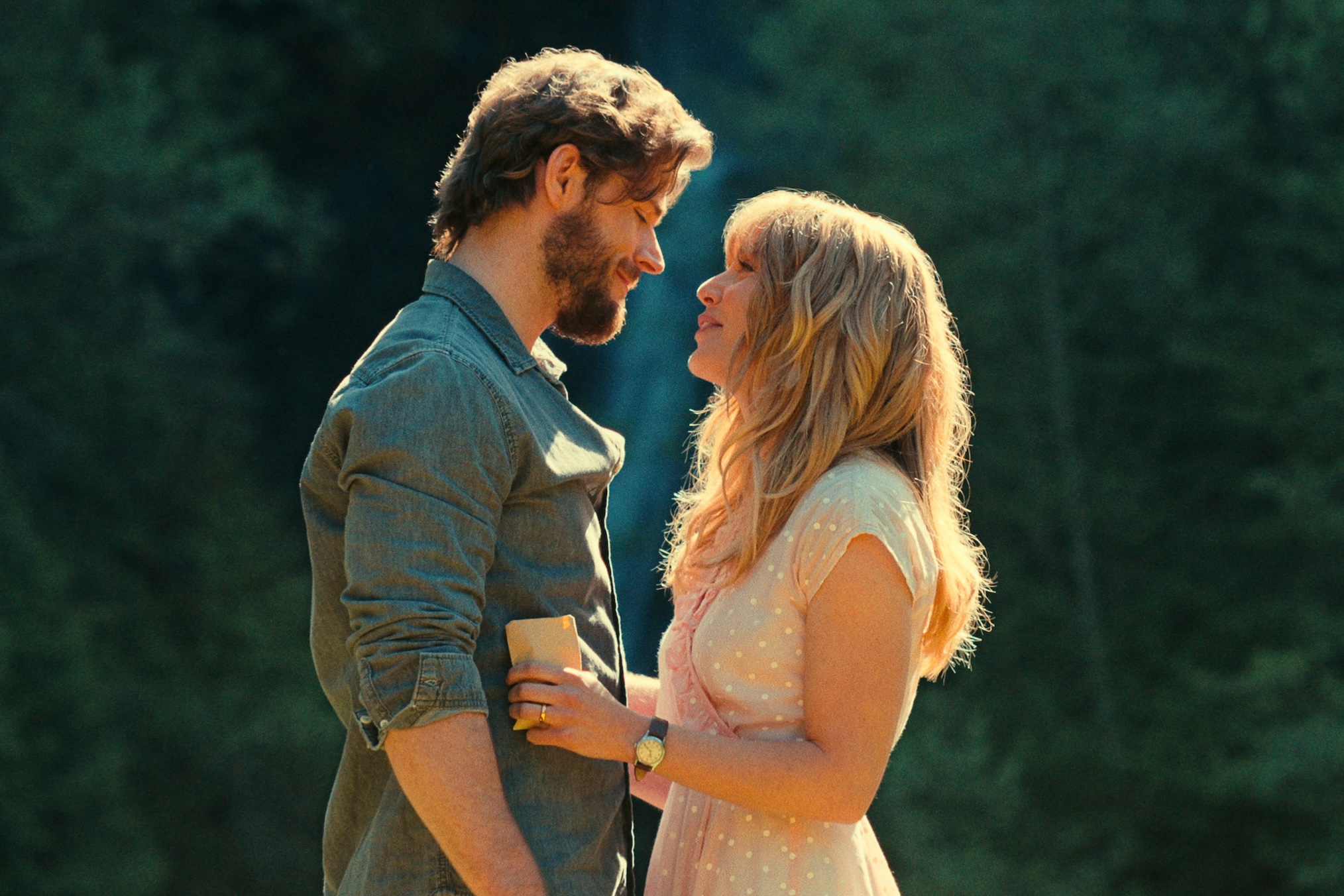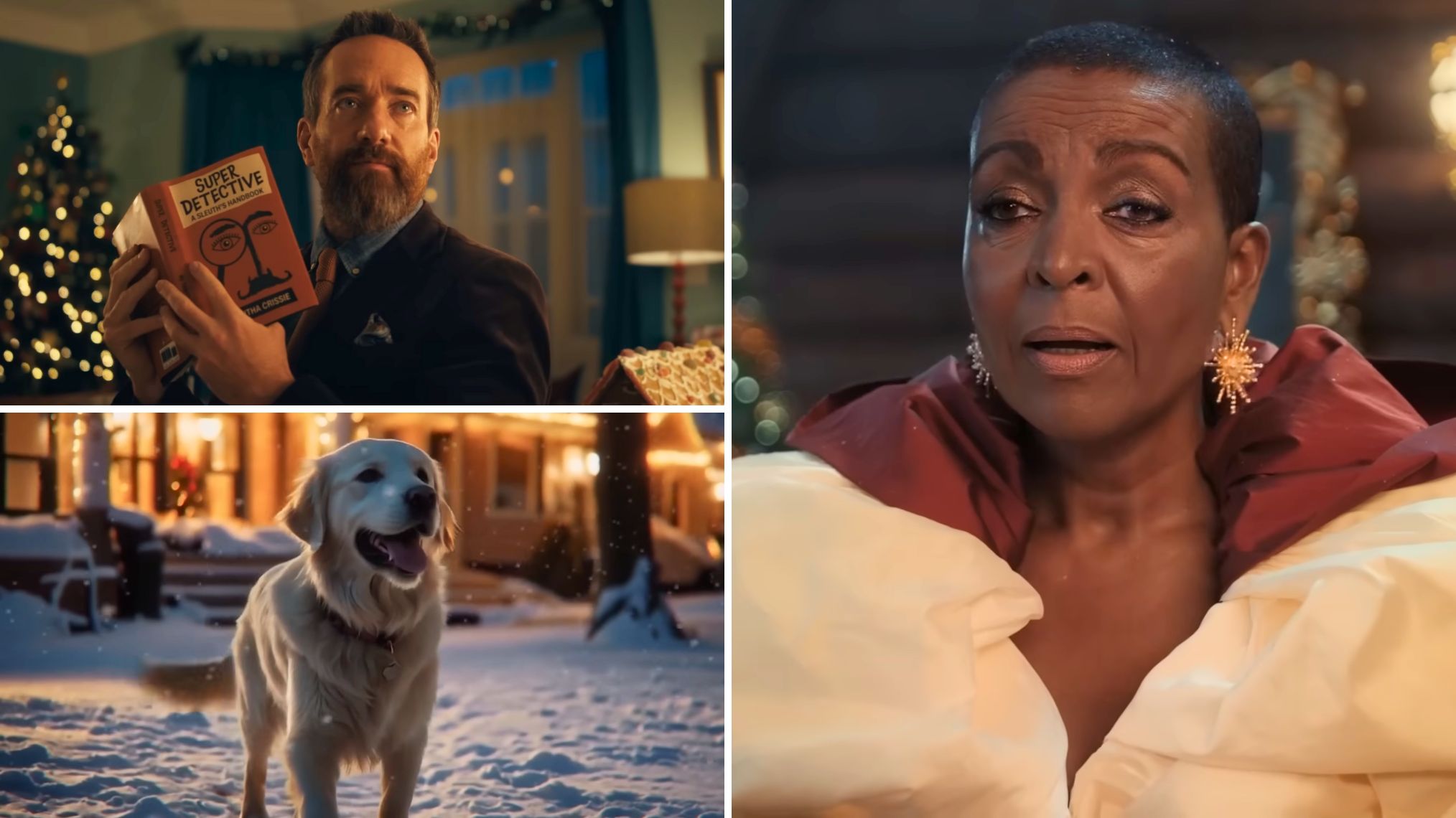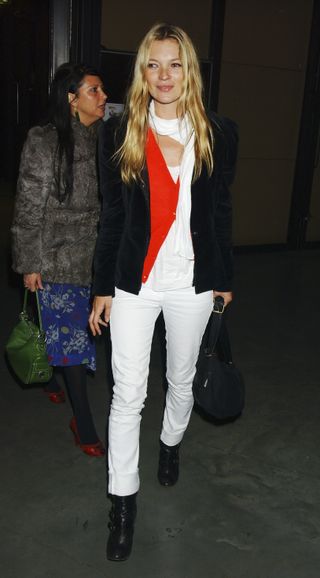
Game of Thrones has been nominated for an Emmy 32 times, winning 12, and its spinoff series House of the Dragon is shaping up to follow suit going into its second season in 2024.
Fun fact: Nine of those nominations were nods for Outstanding Cinematography For A Single-camera Series. HBO cinematographer Pepe Avila Del Pino, who has worked on Quarry, The Deuce, and now House of the Dragon, is looking to claim an award for cinematography for his work on episodes 2, 3, and 10, the Season 1 finale.
Below, Del Pino discusses the obstacles he and the production team overcame to film the finale and the second and third episodes. He also delves into those creative solutions and how he utilized practical effects to shoot scenes in the volume.
I saw in one of your interviews that you’re surprised at how much attention you were getting on House of the Dragon, and yet you have this FYC campaign and potential Emmys nominations; how does it feel?
[…] Most of the time, you’re just submerged into the work itself. [You] forget really the audience or forget the impact that it’s going to have out there in the world. But when House of the Dragon came out, it was an immediate reaction from the audience and people watching it. And it was evident that a lot of people around the world were watching what we did. So that was slightly different from other projects that I’ve worked at.
You guys had to airlift all of Dragonstone to the side of a mountain in Portugal for the season finale. Can you talk about that and how it affected your approach to filming?
For the finale, for some reason, it’s very contained, everything happens in Dragonstone. […] But it’s a Dragonstone that we hadn’t seen before, not even in Game of Thrones. So we had to create it all from scratch, and that was great. Because from the design of the sets, the painted table, the other room, the chamber, and stuff, Jim Clay, the production designer, we really worked on all the details, the height of the windows, the weight of the windows, the shine on the stone on the rock and all that. And how all that was going to come together for the exterior […] outside the castle, which is the island.
There was a hint about how it looked on the previous show [Game of Thrones], in which we saw a little bit of that world. I think they shot in Iceland; there was a beach and a cliff, and that gave us a hint of what this place would be. But Monsanto, which is this mountain in the middle of Portugal, there’s this little clump of massive boulders, like huge, round rocks that it almost makes no sense […], and they built a village and a castle on top of it. So it kind of made perfect sense to set it around there and then build a world around it. For instance, it’s supposed to be volcanic, supposed to be surrounded by water, but I think the elements, [the] almost impossibility of those rocks existing were the anchor for us to create the world on that island around it.
So yeah, it was super challenging. The only way to get there is by foot because there are tiny little roads, but they’re not meant for cars up to the base […] at the top of a little village, and then from there is like another 500-600 meters just hiking, basically. So, the challenge was not only how to get the equipment or the time that it was gonna [take us] to get us there and what would happen if it rained. So yeah, the production decided the best was to build a platform in the middle of the castle and then fly everything with helicopters
That sounds very dangerous.
I mean, I think safety-wise. I mean they had to help from the Portuguese army, I think. Actually, the infrastructure was amazing. I was really impressed with everything. They build steps where steps were needed. They build railings, wood railings were needed. They have these little electric cars to go up and down with smaller stuff. Up there, there was everything, there were bathrooms, catering, pans, heaters, showers, they put everything in there. And of course, we had the other issue, the coming fog, which only happens when there’s only two weeks of fog a year. And, of course, we ended up shooting those two weeks then, which helped. But it was also tricky because, at some moments, it was so thick that we couldn’t see anything, anything at all. So we have to wait for the flow to disperse a few times. But it actually did help with the tone and the setting, for sure.

HBO
I saw an example of you using a smokebox outside Daemon’s room in Dragonstone to create a hazy effect. What other creative ideas did you bring to the table?
Yeah, I think that idea came from two sides. One was that room where we used a smoke box. We’ve seen it before on Game of Thrones, and there was the room with the painted table. But for us, which is the same castle, but 150 years before Game of Thrones, that was not the main room, it was the chamber of the queen. So because we’ve seen it before, and I heard there have been some struggles about what how to portray the exterior of that chamber. But also, we had shot a previous scene, which happened on the bridge, leading to Dragonstone.
That scene we shot in that volume is this set built with LED screens where the images are synced to the camera. And that was the first thing we shot in the volume in the whole show. So I wanted to create an atmosphere or setting that would help us use the tech in the best way. I came up with some references to some impressionistic paintings where the sun was low; the light was soft and orange. So we created this very hazy day outside on that bridge where the sun was low, and the dragons were hidden in the fog below the bridge, and the light could barely break through and you could get a hint of the sun. It took us a lot of research and we generated the skies and played with the amount of fog, the digital fog, and real fog. And finally, we shot that scene over like three or four days.
That was a scene preceding the one in the room I was telling you about. So to give continuity to that atmosphere or that setting and to work with that window, I had an idea of creating this massive box outside the window. Throw one single light through it and give it that sense of reality that we’re at the top of a castle surrounded by fog where the sun is low orange coming through that thick fog. But of course, it was a major build; [it] probably was 40 by 40 feet, the box, and we needed to find the right material too so they wouldn’t show the right kind of fog. And the results were great because the light just looked exactly how we wanted it [and] everybody got their hands on it.
You mentioned filming in the volume for the first time. What was that like? And especially from the perspective of a cinematographer?
I think my feelings about it change over time. But it was a very steep learning curve for everyone. I don’t think anyone on the crew had worked with it before. We had some help and guidelines from people that had worked on The Mandalorian. But ultimately, [none of us] had ever used it. So my first concern when we knew which scenes we had to shoot was to conceptually create what kind of mood and atmosphere and setting would be right for the scene, but also [what could] be enhanced by tech.
So I was trying to find that crossroad where does creative meet practical. So that’s why the very first thing, a bridge, was also kind of an experiment for me; I wanted to see how much I could take it in that direction. So it was thinking about this foggy, low, constant, low sun that you could not shoot practically because you can only shoot magic hour for 30 minutes a day. But if you had magic hour, for three days, three continuous days, for a theme that lasts, I don’t know, 10-11 pages, then that’s like a great opportunity.
But then they came to us with some rules. They were like, ‘oh, you can only shoot one camera at a time, and you should use bright environments.’ But me and Greg [Yaitanes], the director […] ended up shooting using three cameras at a time because even if it’s only one camera that is linked to the screens, if we use the other cameras with long lenses and the background is soft enough, you can buy your in the same space even if they’re not perfectly same as the main camera, so we ended up shooting three cameras.
We also did one thing later on, it’s on Episode Two they’re inside the septum, which is this kind of religious place temple, and we lit it basically only with candles and a bunch of candles. In the beginning, was an issue because the smoke of the candles could get attached to a screen so we needed to create a device that would suck up all the all the smoke from the candles so it wouldn’t go to the screens at all.
But it ended up looking great with the background very dark, which was one of the things they were like, ‘oh we cannot do you shouldn’t do dark environments,’ but I think they look best, and it blends best with a physical set.

Pepe Avila Del Pino Instagram
You and director Greg Yaitanes basically played with toys to choreograph the breathtaking shot of Vhagar’s colossal shadow looming over Luke and Arrax. Can you talk more about that?
Yeah, I love that process and its funny because I’m really proud of that scene. Part of the reason why I took the job was because of this episode, Episode 10. I was very excited because I read the script, because of this dragon chase, because that seemed like a challenge. Before I came to London, I was in a little town in Mexico, and I was looking at these birds flying, and I was like, how would you shoot something like that happened? I mean, where would the camera be? The first thing I did was cut a little reel for Greg so that we can understand what are the camera movements, lenses, and positions up in the air, so I used footage from other dragon movies from Top Gun to Superman.
From there, we picked apart what we liked and didn’t like in terms of lensing and camera movements. Then we got the dragon toys, and before going to the office, we grabbed a sausage roll, some tea and started playing around in his living room with the iPhone, trying to figure out what the path of these dragons would be. ‘Are they going up or they coming down? Where are they flying through? We came up with the idea of going from a cliff going up in the sky.
Originally the script was a night thing. And I want, and I wanted to make it day because I thought the dramatic change from going to a storm to breaking through the clouds and having a sense of hope at the end before the [laughs] tragic chomp would add something. From that, we took what we shot on the iPhone to the storyboard artist, then the animatic and VFX team, and then animation. And again, the volume posed some challenges because they didn’t like water and smoke [near the screens], and the owners of the screens did not want it near the screens. So we had to come up with a system to throw water at the characters and have enough atmosphere so it would blend properly. It was complicated. We needed to find protection for the screens and then find an air system that would push the water away from the screens as we were shooting in the space, then some big extraction so that all the smoke would also not get those screens. In the end, we got it.

Ollie Upton / HBO
Any favorite moments from the episodes you directed?
In Episodes 2 and 3, we had a couple of scenes that happen at the beach where there’s this character, the Crabfeeder. We shot part of it in Cornwell [England] on a very cool beach that appears on low tide and [is] a massive beachside next to some really cool cliffs. But on high tide, it completely disappears, and there’s nothing there. And the low tides last five hours. So in five hours, we had to come down, ruins the whole beach with people dying and people being stabbed into wood pillars into the sand, shoot the scene, and then move out before the water came. We did that three times, I think. It was really important for me to get a sunset moment so we could begin production of the Crabfeeder scene with a very nice low sun. But it has to coincide with a low tide. And I think in our period of shooting, there was only one day that would happen. So I really pushed to move the schedule so that we could have those four hours of sunset while the low tide was happening so we could achieve those shots.
That’s the ending of Episode Two, which is you see on the beach and the crabs and all these people with stakes in the ground in the sun. [But] we managed to do it in those four hours, and it looked great.
Then another favorite moment is the opening of Episode 3, where Damon (Matt Smith) comes to that beach with the crabs and tries to fight all the Crabfeeder’s men, and eventually realizes he cannot; that scene is daytime. And again, we had problems with where to shoot it because of the tide. So I came up with the idea of making that scene night. Also, at night I knew the dragon would be more mysterious, and everything would blend well. And we would be able to play much more with what is insinuated rather than what we’re seeing. So we shot it in a backlot with a couple of black walls and a little bit of fire, technical fire for a couple of nights. And it just had the presence of this thing lurking in the shadows, spitting fire.
This interview has been edited for length and clarity.
























